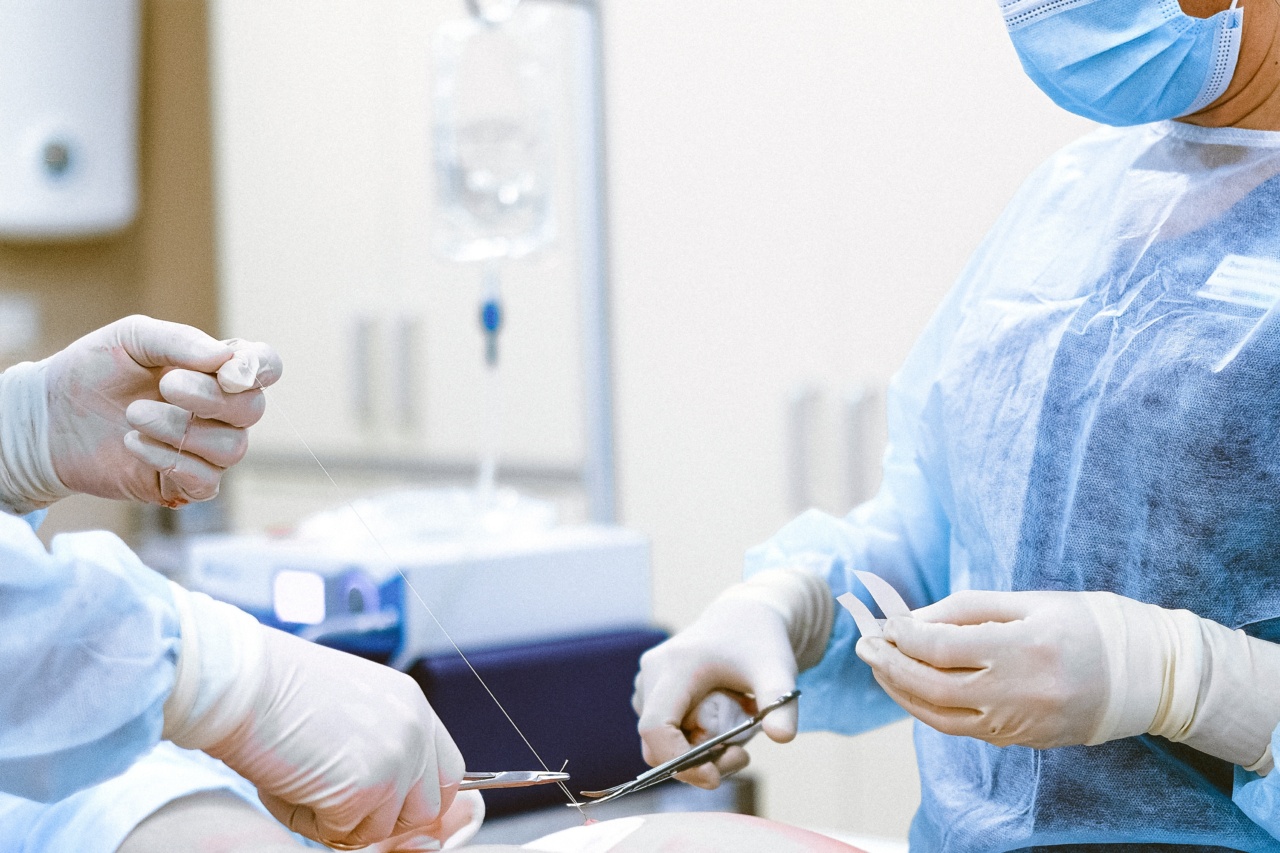Glaucoma is a group of eye conditions that can lead to irreversible vision loss and blindness. It occurs when the optic nerve, which connects the eye to the brain, becomes damaged.
This damage is often caused by high pressure in the eye, known as intraocular pressure. Glaucoma is a progressive disease that can develop slowly over time, and if left untreated, it can result in permanent vision loss.
Types of Glaucoma
There are several types of glaucoma, each with its own characteristics and risk factors. The most common types include:.
1. Open-Angle Glaucoma
Open-angle glaucoma is the most common form of the disease. It occurs when the drainage canals in the eye become clogged over time, leading to increased intraocular pressure.
This type of glaucoma develops gradually, and the initial symptoms are often unnoticeable. As the disease progresses, however, individuals may experience tunnel vision and gradual loss of peripheral vision.
2. Angle-Closure Glaucoma
Angle-closure glaucoma occurs when the iris in the eye blocks the drainage angle, preventing fluid from leaving the eye and causing a sudden increase in intraocular pressure.
This form of glaucoma is often characterized by severe eye pain, blurred vision, and seeing halos around lights. It is considered a medical emergency that requires immediate treatment to prevent vision loss.
3. Normal-Tension Glaucoma
Normal-tension glaucoma, also known as low-tension or normal-pressure glaucoma, is a type of open-angle glaucoma where the optic nerve is damaged despite the absence of high intraocular pressure.
The exact cause of this form of glaucoma is unknown, but it is believed to be related to decreased blood flow to the optic nerve.
4. Congenital Glaucoma
Congenital glaucoma is a rare form of glaucoma that occurs in infants and young children. It is usually present at birth or develops within the first few years of life.
Congenital glaucoma is caused by abnormal development of the eye’s drainage system, leading to increased intraocular pressure. Symptoms may include excessive tearing, light sensitivity, and enlarged eyes.
5. Secondary Glaucoma
Secondary glaucoma occurs as a result of another eye condition or injury. It can be caused by factors such as eye inflammation, ocular tumors, cataracts, or previous eye surgery.
Secondary glaucoma may develop rapidly and requires immediate medical attention to prevent further damage to the optic nerve.
Expert Tips for Preventing Glaucoma
While there is no guaranteed way to prevent glaucoma, there are several measures individuals can take to reduce their risk or delay the progression of the disease. Here are some expert tips:.
1. Get Regular Comprehensive Eye Exams
Regular eye exams are crucial for detecting glaucoma early on, especially since the initial symptoms may be unnoticeable. Comprehensive eye exams can help detect any signs of elevated intraocular pressure or optic nerve damage before vision loss occurs.
It is recommended to have a comprehensive eye exam every 1 to 2 years, or as advised by your eye care professional.
2. Know Your Family History
Glaucoma can have a hereditary component, so it is important to be aware of your family’s eye health history. If you have close relatives with glaucoma, it increases your risk of developing the disease.
Make sure to inform your eye care professional about any family history of glaucoma during your eye exams.
3. Maintain a Healthy Lifestyle
Adopting a healthy lifestyle can contribute to overall eye health and potentially reduce the risk of glaucoma. Some lifestyle factors that may help include:.
– Eating a balanced diet rich in fruits and vegetables, particularly those high in antioxidants and omega-3 fatty acids. These can help protect the eyes from damage caused by free radicals.
– Regular exercise can improve blood flow and circulation, which is beneficial for maintaining healthy optic nerves.
– Avoiding smoking and excessive alcohol consumption, as these habits have been linked to an increased risk of glaucoma.
4. Use Eye Protection
Protecting your eyes from injury is crucial, as trauma to the eye can increase the risk of developing glaucoma. When engaging in activities that pose a risk to the eyes, such as sports or working with tools, always wear appropriate protective eyewear.
These protective measures can help prevent eye accidents and safeguard the optic nerve from damage.
5. Be Aware of Medications
Some medications, such as corticosteroids, can increase intraocular pressure and potentially contribute to the development or progression of glaucoma.
If you are using or considering using medications that may have this effect, discuss the potential risks with your healthcare provider or eye care professional. They can provide guidance and monitor your eye health accordingly.
6. Manage Chronic Conditions
Certain chronic conditions, such as diabetes and high blood pressure, can increase the risk of developing glaucoma.
It is important to manage these conditions effectively through regular medical check-ups, following prescribed treatments, and maintaining a healthy lifestyle. By controlling these conditions, you can help reduce the risk of glaucoma and its complications.
7. Follow Prescription Instructions
If you have already been diagnosed with glaucoma or are at high risk, it is vital to follow your prescribed treatment plan diligently.
This may include using prescribed eye drops, taking oral medications as directed, or undergoing surgical interventions when necessary. Consistently following your treatment plan can help control intraocular pressure and slow down the progression of the disease.
8. Be Aware of Your Symptoms
Understanding the symptoms of glaucoma can help you seek prompt medical attention if you experience any changes in your vision. Some common symptoms of glaucoma may include:.
– Gradual loss of peripheral vision.
– Blurred or hazy vision.
– Halos around lights.
– Severe eye pain.
If you notice any of these symptoms or any other changes in your vision, consult your eye care professional immediately for an evaluation.
9. Educate Yourself
Gaining knowledge about glaucoma and its risk factors can empower you to take proactive steps in prevention. Learn about the disease through reliable sources such as medical websites, books, or informational pamphlets.
By educating yourself, you can make informed decisions about your eye health and better understand the importance of regular eye exams and early intervention.
10. Support Glaucoma Research
Supporting glaucoma research and advocacy organizations can contribute to advancements in the diagnosis, treatment, and prevention of glaucoma.
These organizations play a crucial role in raising awareness, funding research studies, and providing support for individuals affected by glaucoma. Joining or donating to these organizations can make a difference in the lives of those living with the disease.































